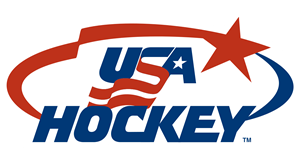American Development Model
WHAT IS USA HOCKEY’S AMERICAN DEVELOPMENT MODEL?
The ADM is USA Hockey’s nationwide player-development program for youth hockey associations. It’s based on age-appropriate, age-specific competition and training for boys and girls, beginning with their first steps onto the ice and carrying them through age 18 and beyond. The ADM places a heightened emphasis on skill development and long-term athlete development principles, providing a blueprint for the best possible youth hockey experience. Put simply, it’s doing what’s best for kids.
HOW DOES THE ADM HELP PLAYERS REACH THEIR FULL POTENTIAL
First and foremost, by enhancing athleticism and emphasizing skill development. Through science and experience, we’ve learned that the world’s elite athletes were almost never early-age specialists. They enjoyed a variety of sports and activities. They climbed. They swam. They biked. In short, they were kids. The ADM lets kids be kids. It encourages them to have fun and it amplifies their all-around athleticism through programming developed by hockey experts, sport scientists and child development specialists. This programming lifts the lid off kids’ athletic potential, blending with science to create a full toolbox of athleticism. When they apply it to hockey, good things happen. When we complement it with age appropriate, age-specific skill training, good becomes great.
BUILDING BLOCKS OF ADM
PLAY
Playing the game is where kids learn that the game is, in its simplest form, fun. And if you can mix in age-appropriate training and practice with skills and athleticism introduction, kids will have even more fun. And to keep it fun, there should be a low priority placed on winning and losing and a high priority placed on just introducing the game to a young kid.
LOVE
Once a kid learns to play the game and begins to develop skills and athleticism, hockey starts to take priority among other activities. Skills become more refined, their physical and mental makeup is stronger and the friendships they developed early on continue to grow. The games become more important and hockey in general becomes a bigger part of their life.
EXCEL
Now that they play and love the game, a higher premium is placed on excelling at it. Tougher competition and more of a focus on mastering skills play an increased role in their development. Hockey starts to take a larger priority over other activities. But, above all, the game is still fun and the friendships that were forged back in Mites are as strong as ever.
LEARNING THE RIGHT WAY
If kids want to truly excel at hockey, they’ll need to learn the right way to play the game. Which is to say less emphasis on stats and win/loss records and more focus on learning the technical aspects of the game. Fundamentals and building both physical and mental skills are crucial to success in hockey. These things can’t be learned efficiently during a game — they have to be learned in practice. And practicing the right way is how kids will be able to unlock their limitless potential.




